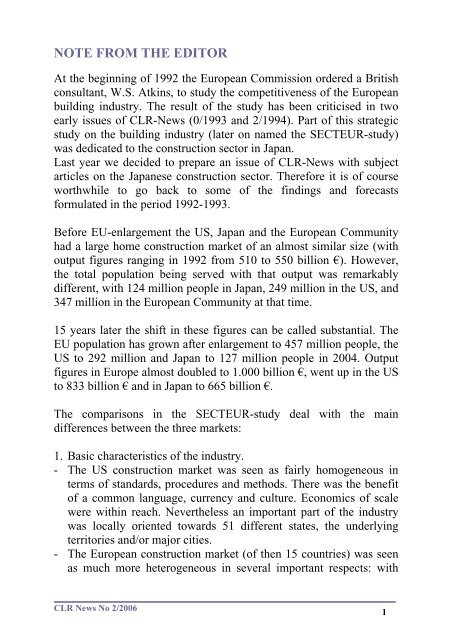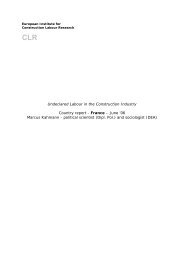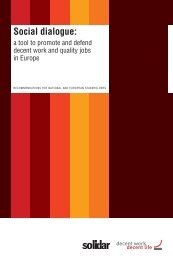Japan – what can we learn? - Construction Labour Research
Japan – what can we learn? - Construction Labour Research
Japan – what can we learn? - Construction Labour Research
You also want an ePaper? Increase the reach of your titles
YUMPU automatically turns print PDFs into web optimized ePapers that Google loves.
NOTE FROM THE EDITORAt the beginning of 1992 the European Commission ordered a Britishconsultant, W.S. Atkins, to study the competitiveness of the Europeanbuilding industry. The result of the study has been criticised in twoearly issues of CLR-News (0/1993 and 2/1994). Part of this strategicstudy on the building industry (later on named the SECTEUR-study)was dedicated to the construction sector in <strong>Japan</strong>.Last year <strong>we</strong> decided to prepare an issue of CLR-News with subjectarticles on the <strong>Japan</strong>ese construction sector. Therefore it is of courseworthwhile to go back to some of the findings and forecastsformulated in the period 1992-1993.Before EU-enlargement the US, <strong>Japan</strong> and the European Communityhad a large home construction market of an almost similar size (withoutput figures ranging in 1992 from 510 to 550 billion €). Ho<strong>we</strong>ver,the total population being served with that output was remarkablydifferent, with 124 million people in <strong>Japan</strong>, 249 million in the US, and347 million in the European Community at that time.15 years later the shift in these figures <strong>can</strong> be called substantial. TheEU population has grown after enlargement to 457 million people, theUS to 292 million and <strong>Japan</strong> to 127 million people in 2004. Outputfigures in Europe almost doubled to 1.000 billion €, <strong>we</strong>nt up in the USto 833 billion € and in <strong>Japan</strong> to 665 billion €.The comparisons in the SECTEUR-study deal with the maindifferences bet<strong>we</strong>en the three markets:1. Basic characteristics of the industry.- The US construction market was seen as fairly homogeneous interms of standards, procedures and methods. There was the benefitof a common language, currency and culture. Economics of scale<strong>we</strong>re within reach. Nevertheless an important part of the industrywas locally oriented towards 51 different states, the underlyingterritories and/or major cities.- The European construction market (of then 15 countries) was seenas much more heterogeneous in several important respects: withCLR News No 2/20061









